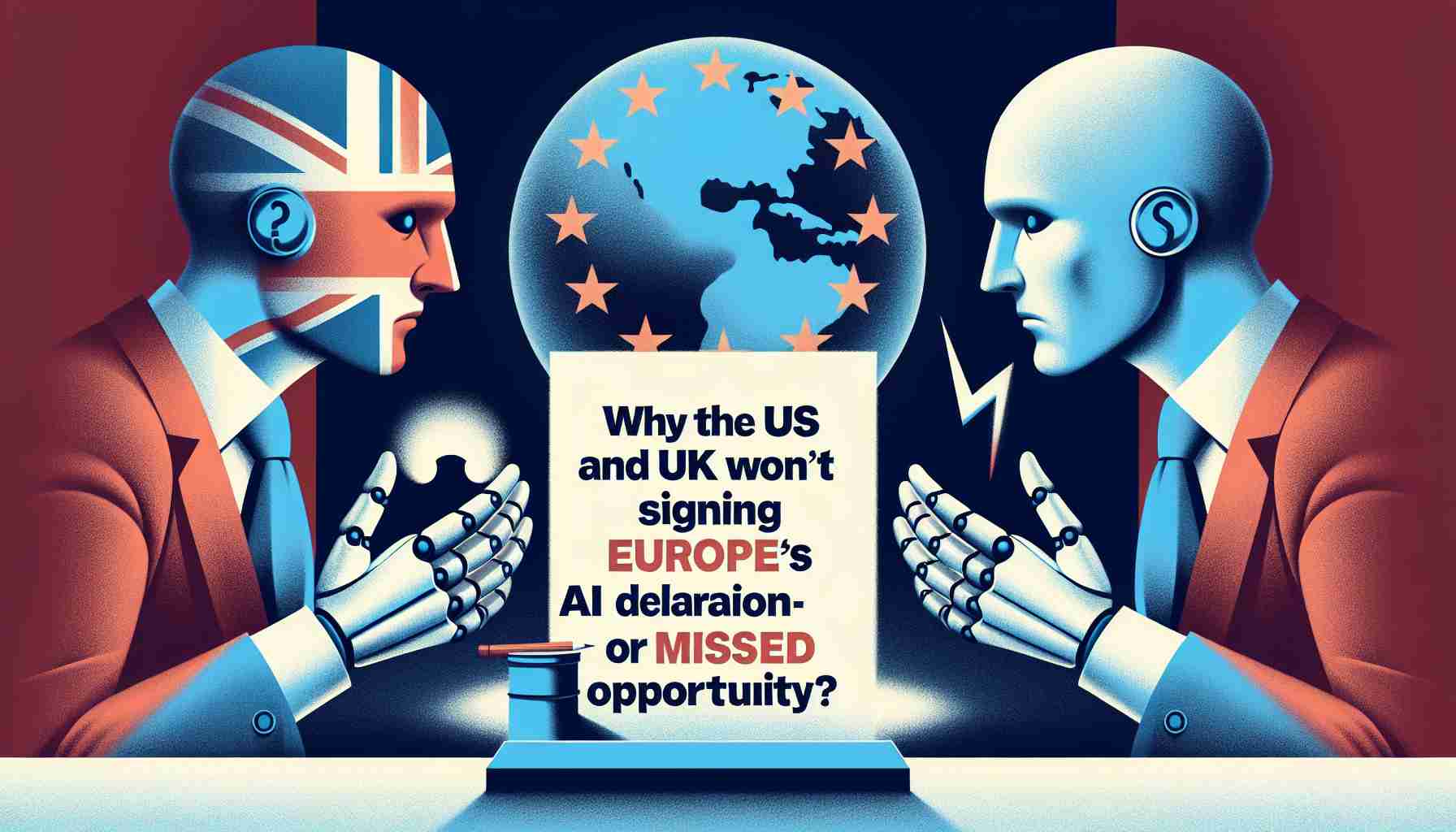- The AI Action summit in Paris aimed to commit nations to a non-binding declaration for AI safety, met with hesitance from the US and UK.
- The US and UK are wary of global governance, preferring a self-guided approach to AI development to avoid stifling innovation.
- Europe, led by France, is shifting focus from heavy regulations to ambitious AI investment, eyeing leadership in the field.
- The balance between regulation and innovation is crucial, with stakes involving technological supremacy and AI safety concerns.
- The summit underscores the complex dynamics of international cooperation and competition in the AI landscape.
In the historic city of Paris, an unlikely drama unfolded as global leaders gathered for the AI Action summit. A thick fog of anticipation hung in the air, fueled by discussions of how to navigate the perilous waters of artificial intelligence. The summit aimed to bind nations to a non-binding declaration to ensure AI’s safety and trustworthiness. Yet out of nearly sixty signatories, two conspicuously shrugged off the call—surprisingly, it was the US and UK.
These two giants simply couldn’t see eye-to-eye with their European counterparts, casting a shadow over France’s quest for global technological harmony. Amidst rising chatter and political maneuvering, Vice-President J.D. Vance’s cautionary note against stifling innovation with rigid rules resonated, echoing the hesitations of the US and UK. They feared the semantic entanglement of “multilateralism” and “global governance,” opting instead for a self-guided approach.
Europe, once seen as a regulatory behemoth, now appears eager to shed its cumbersome chains. Led by France, the continent is shaking off its heavy regulations and turning billions of euros toward ambitious AI ventures. It’s a grand pivot, an intensified dance of regulation versus innovation, as Europe strives to capture the lead from AI juggernauts like the US and China.
The stakes? Nothing short of technological supremacy. As lawmakers grapple with regulation, the scientific community rings alarm bells over overlooking AI safety—which, some argue, is a step backward.
This matrix of choices reveals a key takeaway: striking a balance between freedom and foresight in technology can either foster unprecedented innovation or sow seeds of cautionary tales for generations to come.
The Paris AI Quandary: Navigating Innovation and Regulation in a Shifting Global Landscape
How-To Steps & Life Hacks for Navigating AI Regulation and Innovation
To effectively foster AI innovation while ensuring safety and ethical compliance, follow these steps:
1. Develop Clear Guidelines: Encourage the creation of comprehensive AI guidelines that clarify the ethical and legal boundaries, ensuring they are adaptable to technological advancements.
2. Promote Collaboration: Initiate collaborations between governments, private sectors, and academia to share knowledge and set unified standards.
3. Invest in Education: Enhance AI literacy among citizens and policymakers. Understanding AI’s potential and risks is crucial for informed decision-making.
4. Implement Pilot Programs: Start with pilot AI projects to understand the implications and necessary regulations before wide-scale implementation.
5. Encourage Feedback: Develop mechanisms for continuous feedback from AI users and developers to refine regulations and technologies.
Real-World Use Cases
1. Healthcare: AI technologies are revolutionizing diagnostics and personalized medicine, reducing costs, and improving patient outcomes. For example, AI algorithms can predict disease outbreaks, enhancing public health preparedness.
2. Finance: AI algorithms in banking help detect fraudulent transactions and optimize investment strategies, providing faster and more secure financial services.
3. Transportation: Autonomous driving technologies are gaining traction, promising to reduce accidents and enhance mobility.
Market Forecasts & Industry Trends
The global AI market is projected to reach $390.9 billion by 2025, growing at a compound annual growth rate (CAGR) of 46.2% from 2019, according to MarketsandMarkets. The rise in data generation and the increase in cloud-based AI services are primary drivers of this growth.
Reviews & Comparisons
– US vs. European AI Strategies: The US generally favors an innovation-driven approach with minimal regulation, focusing on self-regulation by tech companies. Europe, on the other hand, is leaning towards creating a unified regulatory framework to safeguard data privacy and prevent misuse.
Controversies & Limitations
One of the most pressing controversies is the fear that stringent regulations may inhibit innovation, as highlighted by US and UK’s reluctance to sign the Paris Declaration. Additionally, there are concerns regarding AI bias, data privacy, and the ethical complexities of AI decision-making processes.
Security & Sustainability
Security in AI involves using encryption, robust access controls, and regular auditing to prevent unauthorized access and misuse of AI systems. Sustainability practices include designing energy-efficient AI algorithms to reduce the carbon footprint.
Insights & Predictions
Expect a continued debate over the balance between regulation and innovation. The political landscape and trade policies will heavily influence AI development and deployment strategies.
Pros & Cons Overview
Pros:
– Accelerated innovation and economic growth.
– Improvements in productivity and efficiency across industries.
– Enhanced problem-solving capabilities.
Cons:
– Potential for increased job displacement.
– Risk of perpetuating existing biases through AI decision-making.
– Data privacy and cybersecurity concerns.
Actionable Recommendations and Quick Tips
1. Stay Informed: Regularly update your knowledge on AI trends and regulations.
2. Secure Your Systems: Ensure robust security measures are in place to protect AI systems.
3. Embrace Ethical AI: Adopt practices that prioritize transparency, fairness, and accountability.
4. Leverage AI Tools: Utilize AI-driven analytics to optimize business processes and decision-making.
For more insights on navigating the future of AI, visit World Bank, or stay updated with technological trends at Gartner.
